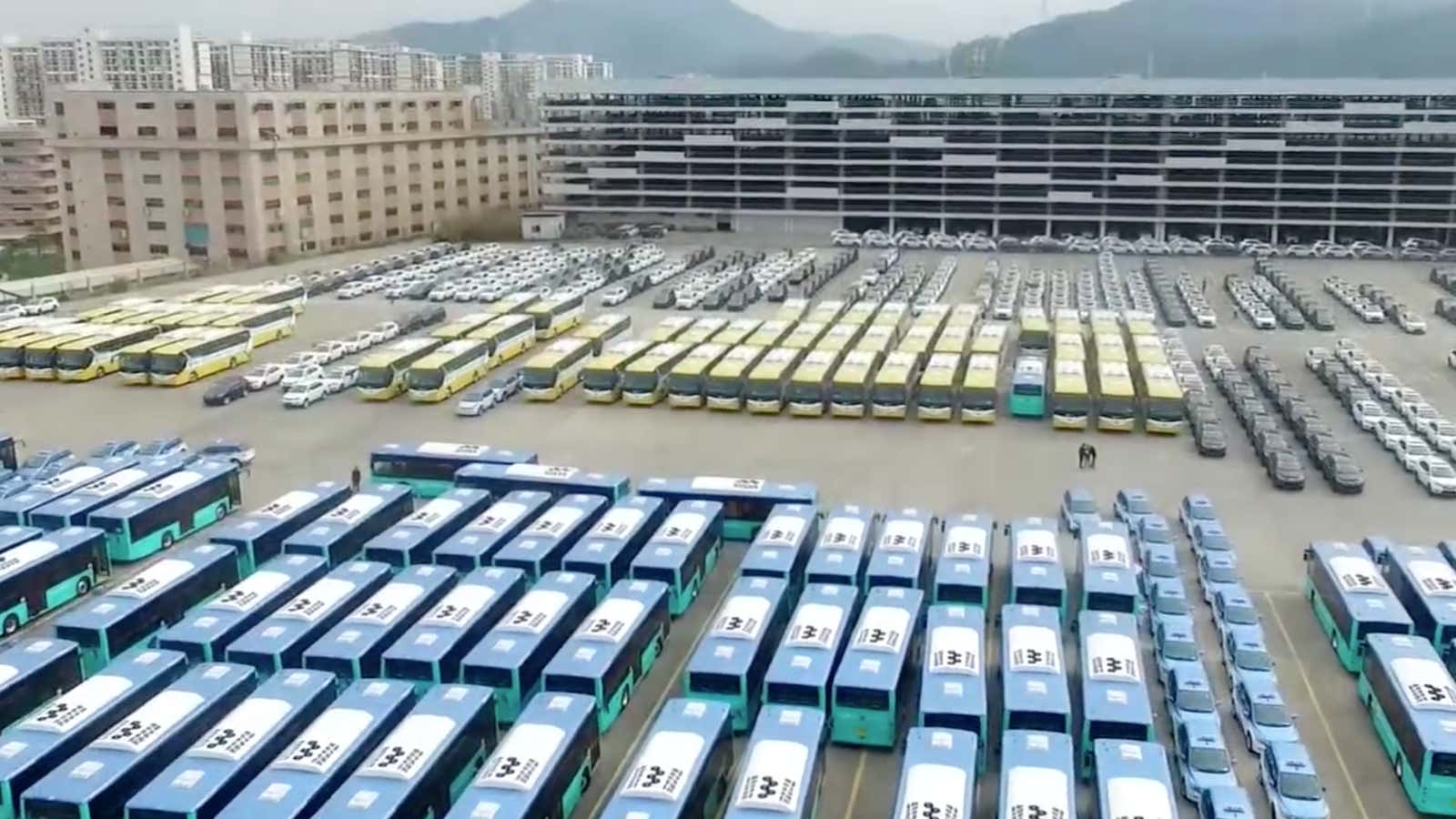China is racing into what it calls its “new energy” future, the country’s term for electric-powered vehicles, and last week Shenzhen completed its transition to all-electric buses. The city’s electric fleet now dwarfs the number of buses, both conventional or electric, in top US metropolitan areas, reports CleanTechnica.
Shenzhen’s transport commission said on Dec. 27 that it had transitioned its 16,359 buses to all-electric models. The city’s 17,000 taxis are next (63% of them are already electric). China chose the city as a pilot for electric transit in 2009, now intends to expand the effort nationwide.
China has relied on its home-grown electric vehicle manufacturer BYD to roll out its electric vehicles. The company has about 20% of the Chinese market.
Cities and fleet operators are going all electric fast because the economics become more attractive the bigger the fleet. A typical passenger car in the US might burn a few hundred gallons of fuel per year, but buses, garbage trucks, and cargo trucks consume thousands of gallons of diesel and incur heavy maintenance schedules. Higher upfront costs from batteries are typically offset within a few years by lower maintenance (fewer moving parts, no internal combustion engine) and lower fuel costs.
The transition is happening at a slower pace in the US and Europe. Los Angeles’s Antelope Valley Transit Authority aims to be the first all-electric public transit fleet in the US by buying 85 electric BYD buses over the next five years. Southern California’s Foothill Transit will be fully electric by 2030. Seattle is buying 120 new electric buses over the next three years. London’s black taxis, owned by the Chinese automobile Geely which also owns Volvo, plan to go electric as well.
